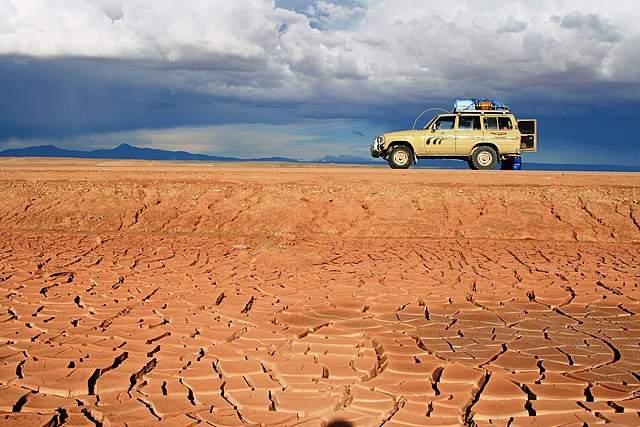If you’re an adventurer at heart who loves exploring new places and experiencing the great outdoors, overlanding might be the perfect activity for you. Overlanding is a thrilling way to travel to remote destinations, driving specialized 4×4 vehicles over long distances while camping and living off the grid.
What does it mean to go overlanding?
Overlanding is a form of long-distance, self-sufficient travel, where the journey is often as important as the destination. It involves driving specially equipped vehicles, such as SUVs or pickup trucks, over rough terrain for days or even weeks, often camping and living out of the vehicle. Overlanders enjoy the freedom to go off the beaten path, explore new and remote areas, and experience the beauty and ruggedness of nature up close.
What is the difference between overlanding and camping?
While overlanding involves camping and living off the grid, it’s different from traditional camping in a few key ways. Overlanders travel in specialized 4×4 vehicles, which are equipped with everything they need for a long journey, including water, food, fuel, and camping gear. They often travel for extended periods of time, covering hundreds or even thousands of miles, and camping in a variety of different locations, from deserts to mountains to forests.
Why do they call it overlanding?
The term “overlanding” originated in Australia and was used to describe the long-distance journeys taken by ranchers who drove their cattle overland to different grazing areas. Today, the term is used to describe a form of adventure travel that involves driving overland to remote destinations, often in 4×4 vehicles that are equipped for rugged terrain and self-sufficient living.
What is the difference between overlanding and off-roading?
While overlanding and off-roading share some similarities, such as the use of 4×4 vehicles and a love of adventure, they are two distinct activities. Off-roading typically involves driving a specialized vehicle over challenging terrain, such as rocky hills or deep mud, for the thrill of the ride. Overlanding, on the other hand, is more about the journey than the destination, and involves traveling long distances over rough terrain, often to remote and inaccessible areas, with the goal of experiencing the beauty and ruggedness of nature.
In conclusion, overlanding is a thrilling way to explore the world and experience the great outdoors. It offers the freedom to travel off the beaten path, camp in remote locations, and immerse oneself in the beauty of nature. Whether you’re a seasoned adventurer or a beginner, overlanding is an exciting and rewarding activity that will leave you with unforgettable memories and a lifelong appreciation for the great outdoors. So, pack your bags, buckle up, and get ready for the adventure of a lifetime!
Checklist for starting overlanding:
- Choose a vehicle: To get started with overlanding, you need a vehicle that is capable of handling rough terrain and long distances. Choose a vehicle that has four-wheel drive, good ground clearance, and is reliable enough to handle the journey.
- Equip your vehicle: Outfit your vehicle with the necessary equipment and accessories for overlanding, including recovery gear, camping gear, a roof rack, and an awning.
- Plan your route: Decide on a destination and plan your route. Research the area, check for permits or restrictions, and plan your route accordingly.
- Pack your gear: Pack your gear, including food, water, fuel, and camping equipment. Be sure to bring along any necessary safety equipment, such as first aid kits, navigation tools, and communication devices.
- Learn essential skills: Learn basic vehicle maintenance, off-road driving techniques, and camping skills. Take courses or attend workshops to gain practical experience.
- Travel with a partner: Overlanding can be a solitary activity, but it’s always safer to travel with a partner or a group. Not only is it more enjoyable to share the experience with others, but it’s also safer to have someone to rely on in case of an emergency.
- Follow Leave No Trace principles: When camping and traveling in remote areas, it’s essential to follow Leave No Trace principles to minimize your impact on the environment. Pack out all trash, use established campsites, and avoid damaging the terrain.
- Practice responsible off-roading: When driving off-road, practice responsible and sustainable off-roading techniques to avoid damaging the environment. Stick to established trails, avoid sensitive areas, and don’t disturb wildlife or their habitats.
By following these steps, you can get started in the exciting world of overlanding and enjoy the adventure of exploring remote and beautiful locations.
Summer 2022 Camping Gear Checklist

